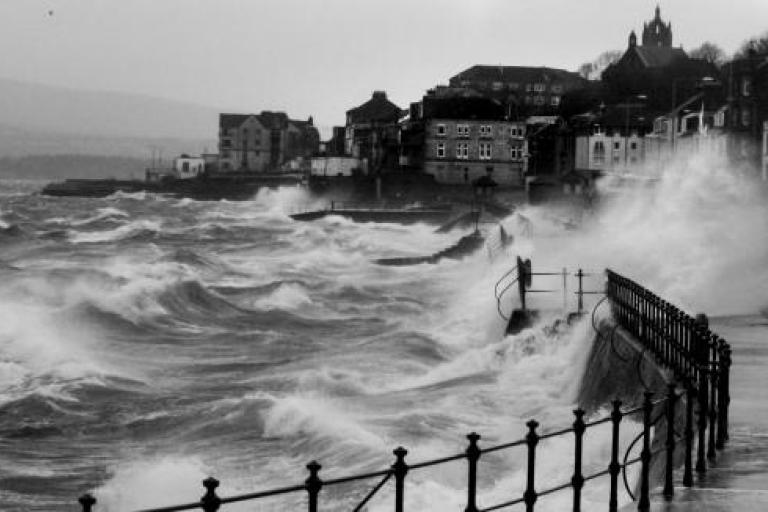WMO Executive Council commits to Early Warnings for All

One of the World Meteorological Organization’s top strategic priorities – to ensure that everyone on Earth is protected by Early Warning Systems (EWS) in the next five years – is gaining momentum.
WMO’s Executive Council, which met from 27 February to 3 March, agreed a series of proposals which will ensure that the organization’s activities are aligned to the Early Warnings For All initiative. The resolutions will be forwarded to the decision-making World Meteorological Congress in May.
“We have received very strong support for the Early Warnings for All initiative from developed and developing countries alike. This is a great opportunity and great challenge for our community,” said WMO Secretary-General Prof. Petteri Taalas.
The UN Early Warnings for All action plan was launched by UN Secretary-General António Guterres during the World Leaders Summit at the UN 2022 Climate Change Conference, COP27. It calls for initial new targeted investments of $ 3.1 billion.
National Meteorological and Hydrological Services are key to its technical implementation because they are the official and authoritative providers of early warnings for hydrometeorological hazards. WMO technical commissions will develop the supporting normative work.
WMO is one of the leaders of the initiative, which feeds into its 2030 Vision and Strategic Operating Plan, which foresee a world where all nations, especially the most vulnerable, are more resilient to the socioeconomic consequences of extreme weather, climate, water, and other environmental events. It is partnering with the UN Office for Disaster Risk Reduction, the International Telecommunications Union and the International Federation of Red Cross and Red Crescent Societies to advance different pillars of the initiative.
The number of weather-related disasters related to extreme heat and rainfall is increasing, exacerbated by human-induced climate change . Low-lying and highly populated urban areas are especially vulnerable, especially given that many hazards have a compound and cascading effect.
Advances in forecasting and coordinated early warnings and early action have successfully slashed the number of deaths in the past 50 years.
Executive Council noted the need to address existing gaps in the global climate observing system particularly in developing countries, in view of the fact that one third of the world, including 60% of Africa does not have access to early warning and climate information services.
“The effective operation of the multi-hazard early warning system requires an integrated and coordinated and research supported approach to address various types of hazards, including geophysical ones such as volcanoes, earthquakes, tsunamis and landslides, especially in countries where such hazards are common, and sometimes occur simultaneously,” it said.
Global Multi-Hazard Alert System
Executive Council approved the roll-out of the Global Multi-Hazard Alert System (GMAS), saying that “by 2025 the GMAS Framework should be recognized globally by decision makers as a resource of authoritative warnings and information related to high-impact weather, water, ocean and climate events. »
The GMAS Implementation Plan will promote efforts to strengthen Members ability to issue alerts and warnings through national, regional and global capacity strengthening and by leveraging existing WMO mechanisms and infrastructure.
The GMAS Framework focuses specifically on alerting and warning functions across WMO. The impetus for this WMO focus is that there has been rapid progress in this in recent decades, spurred by amazing advances in affordable Information and Communications Technologies (ICTs), and by widespread movement toward an all-hazards and all-media approach to alerting and warning, known as the Common Alerting Protocol.
Support for Humanitarian Sector
There is high demand for such early warning advice by humanitarian agencies.
Executive Council agreed to further enhance the support they provide the UN Humanitarian Agencies through the development of the WMO Coordination Mechanism. This ensures that UN partners have access to authoritative data, information and expert advice – for instance on seasonal forecasts or high-impact weather events sharing NMHS`s information. This helps to inform Anticipatory Action, risk assessment and response.
Action on Climate and Health
The Executive Council also agreed to step up its activities to protect people from climate and health-related hazards, including extreme heat and air pollution as part of the drive towards improved early warnings and action.
It endorsed a new implementation plan for advancing integrated climate and health science and services over the next ten years. This promotes a coordinated approach to manage the impact of climate, weather, air pollution, UV radiation, extreme events and other environmental factors on health.
Other priorities
Executive Council also discussed the strengthening of WMO hydrological activities, especially in view of the forthcoming UN Water Conference, at which WMO will play a major role.
It endorsed plans for a new Global Greenhouse Gas Monitoring Infrastructure to fill critical information gaps and support action to reduce heat-trapping gases which are fuelling temperature increase.
It also considered a series of proposals to strengthen the delivery and use of services, especially at the regional level, as well as research.
The World Meteorological Organization (WMO) is a specialized agency of the United Nations responsible for promoting international cooperation in atmospheric science and meteorology.
WMO monitors weather, climate, and water resources and provides support to its Members in forecasting and disaster mitigation. The organization is committed to advancing scientific knowledge and improving public safety and well-being through its work.
For further information, please contact:
- Clare Nullis WMO media officer cnullis@wmo.int +41 79 709 13 97

